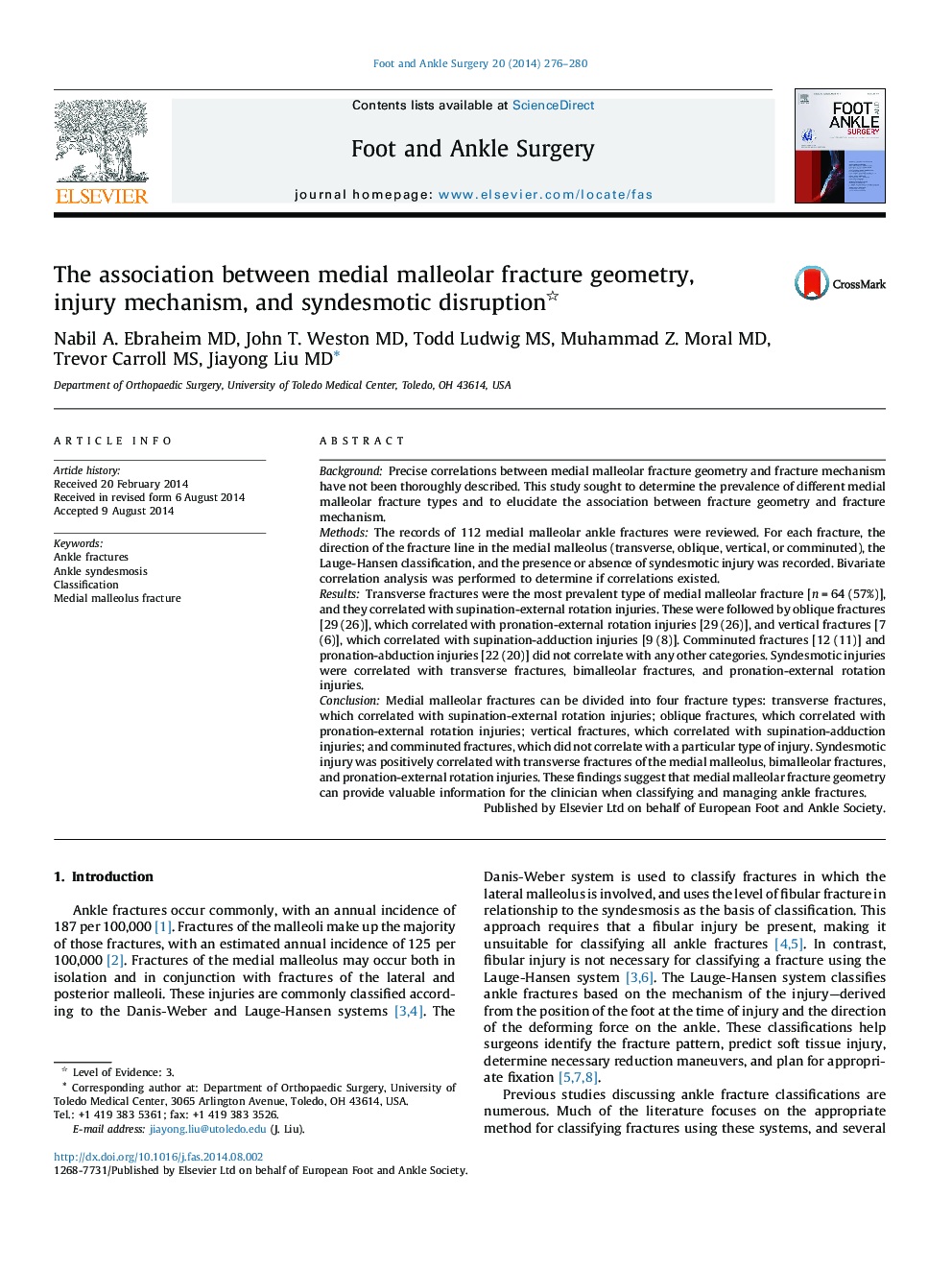| کد مقاله | کد نشریه | سال انتشار | مقاله انگلیسی | نسخه تمام متن |
|---|---|---|---|---|
| 4054551 | 1603815 | 2014 | 5 صفحه PDF | دانلود رایگان |

• Transverse fractures were the most prevalent type of medial malleolar fracture.
• Transverse fractures correlated with supination-external rotation (SER) injuries.
• Oblique fractures correlated with pronation-external rotation (PER) injuries.
• Vertical fractures correlated with supination-adduction (SA) injuries.
• Syndesmotic injuries correlated with PER, transverse and bimalleolar fractures.
BackgroundPrecise correlations between medial malleolar fracture geometry and fracture mechanism have not been thoroughly described. This study sought to determine the prevalence of different medial malleolar fracture types and to elucidate the association between fracture geometry and fracture mechanism.MethodsThe records of 112 medial malleolar ankle fractures were reviewed. For each fracture, the direction of the fracture line in the medial malleolus (transverse, oblique, vertical, or comminuted), the Lauge-Hansen classification, and the presence or absence of syndesmotic injury was recorded. Bivariate correlation analysis was performed to determine if correlations existed.ResultsTransverse fractures were the most prevalent type of medial malleolar fracture [n = 64 (57%)], and they correlated with supination-external rotation injuries. These were followed by oblique fractures [29 (26)], which correlated with pronation-external rotation injuries [29 (26)], and vertical fractures [7 (6)], which correlated with supination-adduction injuries [9 (8)]. Comminuted fractures [12 (11)] and pronation-abduction injuries [22 (20)] did not correlate with any other categories. Syndesmotic injuries were correlated with transverse fractures, bimalleolar fractures, and pronation-external rotation injuries.ConclusionMedial malleolar fractures can be divided into four fracture types: transverse fractures, which correlated with supination-external rotation injuries; oblique fractures, which correlated with pronation-external rotation injuries; vertical fractures, which correlated with supination-adduction injuries; and comminuted fractures, which did not correlate with a particular type of injury. Syndesmotic injury was positively correlated with transverse fractures of the medial malleolus, bimalleolar fractures, and pronation-external rotation injuries. These findings suggest that medial malleolar fracture geometry can provide valuable information for the clinician when classifying and managing ankle fractures.
Journal: Foot and Ankle Surgery - Volume 20, Issue 4, December 2014, Pages 276–280